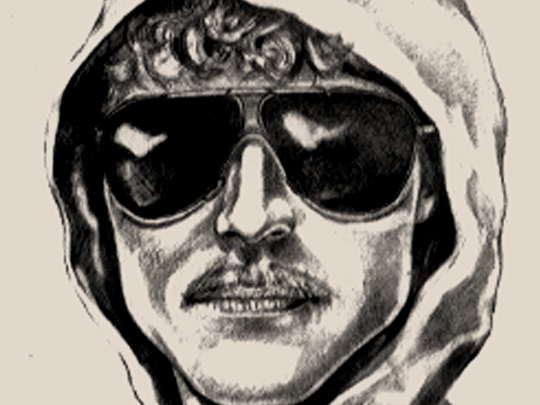FBI / Wikimedia Commons / CC-BY-SA-3.0 / GFDL
1 – Ted Kaczynski – The Unabomber, Arrested After 17 Years
Kaczynski was a mathematics prodigy, who became the youngest assistant professor of mathematics in the history of the University of California, Berkeley, at the age of 25.
However, less than two years later, he resigned without explanation on 30 June 1969.
In 1971, Kaczynski moved to a remote cabin he had built outside Lincoln, Montana, without electricity or running water, and lived as a recluse, while working odd jobs.
He made it his goal to become self-sufficient, teaching himself survival skills so that he could live autonomously.
After witnessing the destruction of the wilderness in the vicinity of his cabin, Kaczynski concluded he could not live peacefully in nature due to real estate and industrial developments damaging the environment. In 1975, he began performing acts of sabotage locally.
Between 1978 and 1995, Kaczynski escalated his activities and began his bombing campaign, killing three people and injuring 23 others. The campaign was an attempt to start a revolution by targeting people connected with modern technology.
In 1995, Kaczynski sent a letter to The New York Times and promised to stop the bombing if his essay, Industrial Society and Its Future, would be published in The Times or The Washington Post. The essay opposed industrialization and promoted a nature-centered form of anarchism.
After recommendations by Attorney General Janet Reno and FBI Director Louis Freeh, the essay was published by The New York Times and The Washington Post on 19 September, leading to a tip-off from Kaczynski’s brother, David, who recognized the writing style.
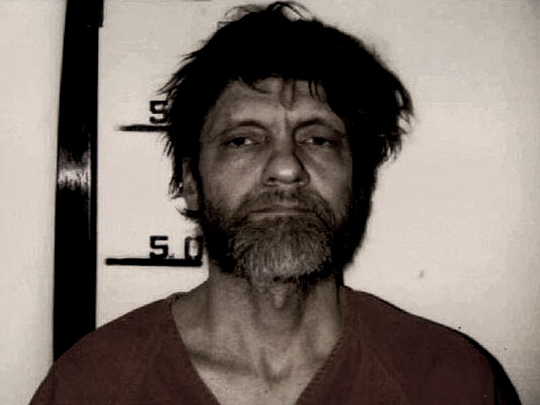
On 3 April 1996, Kaczynski was arrested at his cabin, which contained bomb components, a hand-written journal, including bomb-making experiments, descriptions of the Unabomber crimes, and a live bomb, ready for mailing.
The acronym UNABOM (University and Airline Bomber) was used by the FBI for the case, leading to the media labeling him the “Unabomber”. Kaczynski’s arrest ended the longest and most expensive investigation in the history of the FBI.
In 1998, Kaczynski reached a plea bargain, pleading guilty to all charges in exchange for sentenced to life in prison without the possibility of parole. His cabin, which was seized by the U.S. government, is on display at the Newseum in Washington, D.C.
2 – Irish Journalist Veronica Guerin Shot and Killed While in Stopped at Traffic Lights
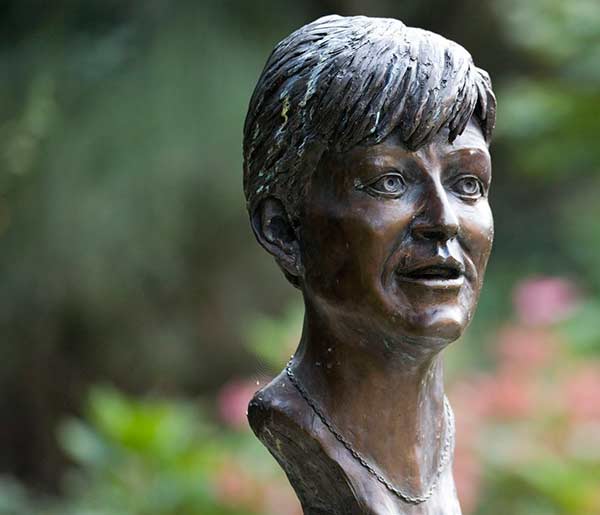
Guerin was an Irish crime reporter for the Irish Sunday Independent, who used her accountancy knowledge to trace the proceeds of illegal activity.
Reporting on drug dealers, Guerin gained information from convicted criminal John Traynor and received numerous death threats. In October 1994, two shots were fired at her home after she published a story on murdered crime kingpin Martin Cahill.
On 30 January 1995, the day after writing an article on Gerry “The Monk” Hutch, Guerin answered her doorbell to a gunman, but he missed and shot her in the leg.
Later that year, on 13 September, crime boss John Gilligan attacked her when she confronted him about his lavish lifestyle with no apparent source of income.
He later phoned her, threatening her life and that he would kidnap and rape her son if she wrote anything else about him.
On 26 June 1996, Guerin was stopped at a red traffic light in her red Opel Calibra near Newlands Cross, on the outskirts of Dublin, when she was shot six times and killed by one of two men on a motorcycle, that had been following her.
Gilligan gang member Charles Bowden agreed to turn state’s witness against Gilligan and other gang members Brian Meehan, Kieran Concannon, Patrick Holland, Peter Mitchell, and Paul Ward. He was the first person to enter the country’s Witness Security Programme.
Shortly after Guerin’s murder, the Criminal Assets Bureau (CAB) was established, meaning assets purchased with money obtained through crime could be seized by the government. The subsequent investigation into her death resulted in over 150 arrests and convictions.
Most notably, Brian Meehan was convicted of murdering Guerin, and sentenced to life imprisonment following testimony from gang member turned state’s witness Russell Warren. Warren had followed Guerin’s movements prior to the murder and called Meehan with the details.
Crime boss John Gilligan fled Ireland but was arrested a year later in the UK trying to board a flight with $500,000 in cash.
He was extradited to Ireland in February 2000 but was acquitted of Guerin’s murder. He was convicted of importing 20 tonnes of cannabis and sentenced to 20 years on appeal.
At the time of her murder, John Traynor was seeking a High Court order against Guerin to prevent her from publishing a book about his involvement in organized crime.
He fled to Portugal and lived around Europe for the next 14 years, before serving time in an English prison.
3 – Dunblane Massacre in Scotland
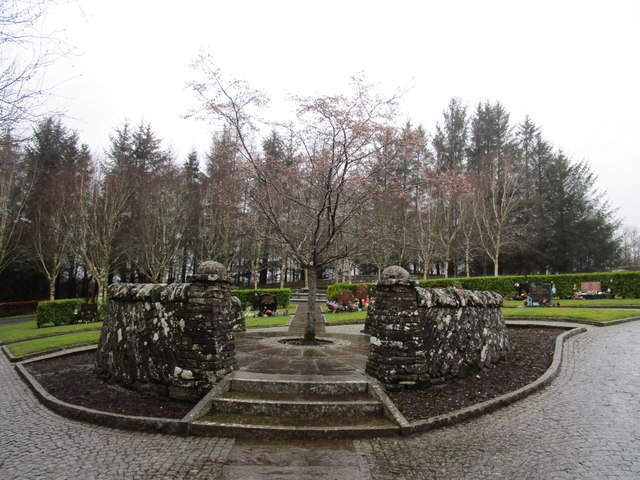
The Dunblane school massacre took place in Dunblane Primary School near Stirling, Stirlingshire, Scotland.
On 13 March 1996, 16 children and one teacher were shot and killed by 43-year-old Thomas Hamilton before he killed himself. The incident remains the deadliest mass shooting in British history.
Hamilton arrived in the car park of Dunblane Primary School at around 9:30 am and cut the cables at a nearby telegraph pole. He then made his way across the car park into the school gymnasium with four legally held handguns.
Over the course of a 4-minute period, 32 people, mostly 5-year-old children, sustained gunshot wounds, with teacher Gwen Mayor and 16 of her pupils dying from their injuries.
The school gymnasium was demolished a month later and was replaced by a memorial garden. In March 1998, a memorial garden was opened at Dunblane Cemetery, where Mayor and twelve of the children are buried.
One of the greatest tennis players of the modern era, Andy Murray, then aged eight, and his 10-year-old brother Jamie (former tennis doubles world No. 1.) were in the school at the time, with Andy’s class having actually been on the way to the gym when the shooting took place.
In the 1970s, Hamilton (the shooter) was blacklisted by the Scout Association for complaints about his behavior with boys, though he was later involved with boys’ clubs in the area. In 1993, Hamilton claimed that rumors about him led to the failure of his local shop.
The massacre resulted in two new Firearms Acts being passed, which outlawed private ownership of most handguns in Great Britain.
4 – Erik & Lyle Menendez Found Guilty of Killing Their Parents
The Menéndez brothers, Lyle and Erik, were from Beverly Hills, California, who gained infamy for the shotgun murders of their wealthy parents, José Menéndez and his wife Mary, known as “Kitty” in August 1989.
On 20 August 1989, José and Kitty Menéndez were sitting on a couch in their Beverly Hills home when Lyle and Erik entered with their shotguns. José was shot in the back of the head, while Kitty was shot several times, including in the face. They were also shot in the kneecaps.
Later that night, Lyle rang 911, reporting “Somebody killed my parents”. The brothers told police they had been to see Batman at the movie theater during the murders.
Police officers did not carry out gunshot residue tests on the brothers to see if they had recently used a firearm.
Following the murders, the brothers went on a lavish spending spree, arousing suspicions that they may have been involved in their parents’ murders. It is estimated the brothers spent around $700,000 between the murders and their arrests.
Lyle bought a Porsche Carrera, a Rolex watch, and a restaurant in Princeton, New Jersey, while Erik hired a full-time tennis coach. They lived in adjoining condos in Marina del Rey, dined expensively and went on trips to the Caribbean and London.
In March 1990, Erik confessed to his psychologist Jerome Oziel about the murders. Oziel told his mistress about the killings after being threatened by Lyle, who then informed the police. Lyle was arrested on 8 March and Erik turned himself in three days later.
Judge James Albrecht stated that tapes of conversations between Erik and Oziel were admissible, as Lyle threatening Oziel had violated the doctor-patient privilege. The ruling was appealed, which would delay proceedings for over two years.
In December 1992, the brothers were finally charged with the murder of their parents. During the televised trial, the brothers claimed they committed the murders due to years of sexual and emotional abuse they had suffered at the hands of their parents, particularly their father.
They were first tried separately, but both juries were deadlocked, resulting in a mistrial.
However, for a second trial, they were tried together by the same jury. On 2 July 1996, Judge Weisberg sentenced the brothers to life in prison without the possibility of parole.
5 – Body of Former CIA Director William Colby is Found Washed Up On a Riverbank
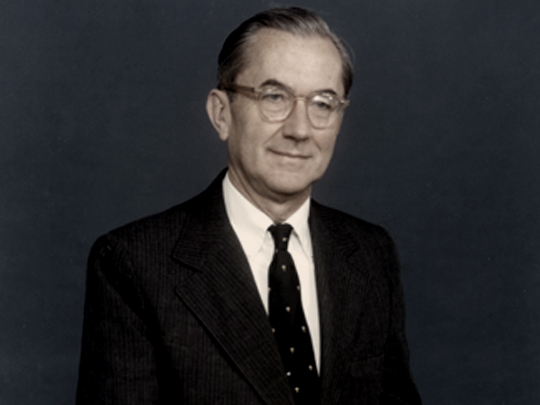
William Egan Colby was an American intelligence officer who served as Director of the CIA from September 1973 to January 1976.
Having served in the intelligence service during World War II, Colby joined the newly created CIA after the war. Before and during the Vietnam War, Colby served as station chief in Saigon and chief of the CIA’s Far East Division.
After becoming CIA director, Colby came under intense pressure from the U.S. Congress and the media. However, President Ford, advised by Henry Kissinger and others concerned by Colby’s controversial openness to questioning, replaced Colby with George H. W. Bush.
On 27 April 1996, Colby set out on a solo canoe trip from his weekend home in Rock Point, Maryland.
The next day, his canoe was found on the Wicomico Riverbank, not far from his home. On 6 May, Colby’s body was found facedown in a marshy riverbank close to where his canoe was found.
After an autopsy, Maryland’s Chief Medical Examiner John E. Smialek ruled his death to be accidental.
His report noted that Colby was predisposed to having a heart attack or stroke and that he likely suffered a complication leading to him succumbing to the effects of hypothermia and drowning.
In the 2011 documentary The Man Nobody Knew, Colby’s son Carl suggested his father committed suicide due to guilt from his actions in the CIA. Carl’s step-mother, siblings, and Colby’s biographer, Randall Woods, criticized the portrayal of Colby and rejected the idea that he killed himself.
6 – IRA Bomb Manchester Wrecks City Centre
The Manchester bombing was an attack carried out by the Provisional Irish Republican Army (IRA) on Saturday 15 June 1996. The IRA detonated a 1,500-kg truck bomb in Manchester city center, England.
The bomb targeted the city’s infrastructure and economy, causing devastating damage, estimated at £700 million by insurers. It was the biggest bomb detonated in the UK since the end of World War II.
About 90 minutes before the bomb detonated, the IRA sent telephoned warnings, but the bomb squad was unable to defuse it in time.
There were no fatalities despite the strength of the bomb, but over 200 people were injured, while 75,000 people were evacuated from the area.
The bombing was condemned by the British and Irish governments and U.S. President Bill Clinton. England was hosting the Euro ’96 football championships at the time, with Russia vs Germany scheduled to take place in Manchester the following day.
Five days after the blast, the IRA issued a statement claiming responsibility, regretting the injuries caused to civilians. In February 1996, the IRA had ended a 17-month ceasefire with a large truck bomb attack on London’s Canary Wharf.
Several buildings were damaged beyond repair and had to be demolished. The perpetrators of the attack were never caught. On a positive note, the bombing has been credited for starting the city’s mass regeneration.
7 – The Whitewater Controversy
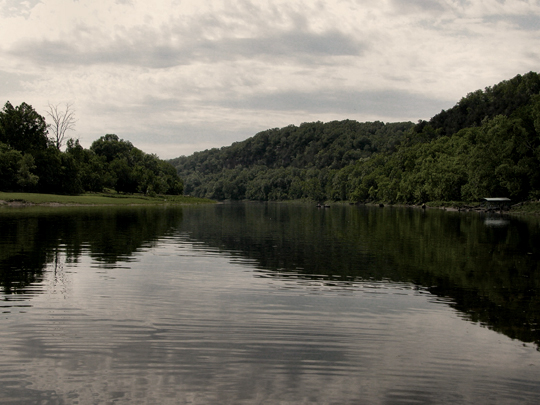
The Whitewater controversy was an investigation into the real estate investments of Bill and Hillary Clinton and their associates, Jim McDougal and Susan McDougal, in the Whitewater Development Corporation.
Starting in 1979, the venture began with the purpose of developing vacation properties along the White River near Flippin, Arkansas.
During the 1992 U.S. presidential campaign, the New York Times reported the Clintons, then governor and first lady of Arkansas had invested and lost money in the Whitewater Development Corporation.
L. Jean Lewis, who had been investigating the McDougals, submitted a criminal referral to the FBI naming Bill and Hillary Clinton as witnesses in the Madison Guaranty case on 2 September 1992. The FBI determined the referral lacked merit.
Lewis continued pursuing the case, issuing multiple additional referrals against the Clintons, before they eventually became public knowledge, leading to her testifying before the Senate Whitewater Committee in 1995.
In November 1993, banker David Hale claimed that Bill Clinton had pressured him into providing an illegal $300,000 loan to Susan McDougal, one of the Clintons’ partner in the Whitewater land deal.
Hale’s allegations were questioned as he had not mentioned Clinton with regard to the loan during the original FBI investigation. It was only after he was indicted that Hale made the allegations against the Clintons.
Clinton’s successor as governor, Jim Guy Tucker, was convicted of fraud and sentenced to four years of probation for his role in the project. Three separate inquiries found insufficient evidence to ever prosecute Bill or Hillary Clinton, while 15 people were convicted of more than 40 crimes.
Susan McDougal served 18 months in prison for contempt of court for refusing to answer Whitewater-related questions. Prior to leaving office, Bill Clinton granted McDougal a pardon.
8 – The Khobar Towers Bombing in Saudi Arabia Kills 19 U.S. Servicemen
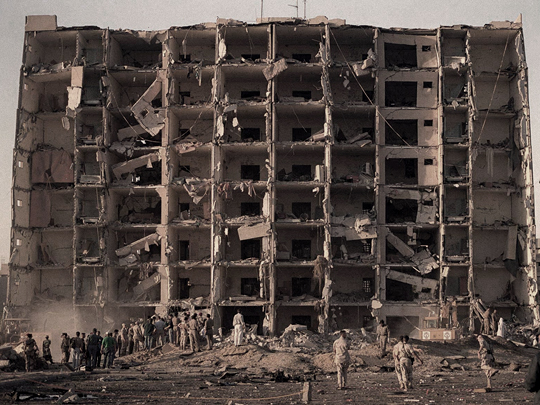
The Khobar Towers bombing was a terrorist attack on a housing complex in the city of Khobar, Saudi Arabia, on 25 June 1996.
The complex was located near the headquarters of Saudi Aramco, the national oil company, and the King Abdulaziz Air Base.
As part of Operation Southern Watch, a no-fly zone operation in southern Iraq, Khobar Towers was being used as quarters for Coalition forces who were assigned to the mission.
The bomb, a mixture of petrol and explosive powder in the tank of a sewage tanker truck, was detonated on the base’s perimeter, next to an eight-story building housing members of the U.S. Air Force.
In total, the bomb killed 19 Air Force personnel and a Saudi civilian, while 498 people were wounded.
In the aftermath of the attack, U.S. and Coalition military operations at Khobar and Dhahran were relocated to Prince Sultan Air Base, a remote and highly secure installation in central Saudi Arabia.
In 2006, a U.S. court found Iran and Hezbollah were directly and personally responsible for orchestrating the attack.
However, in June 2007, William Perry, who was the U.S. Secretary of Defense at the time of the bombing, said in an interview that he now believed it was al-Qaida rather than Iran who was behind a 1996 truck bombing at an American military base.
9 – Rapper Tupac Shakur Shot & Killed in a Drive-by Shooting in Las Vegas
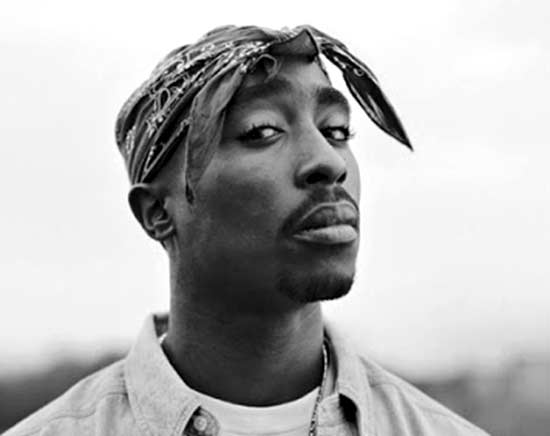
American rap artist Tupac Shakur was fatally shot on 7 September 1996, in a drive-by shooting in Las Vegas, Nevada. Shakur had been in attendance at the Bruce Seldon vs. Mike Tyson boxing match at the MGM Grand with Suge Knight, the head of Death Row Records.
After the fight, one of Knight’s associates, Travon Lane, a Bloods gang member, spotted a Crips gang member, Orlando Anderson, in the MGM Grand lobby.
Lane told Tupac, who attacked Anderson, punching him in the face and knocking him to the ground. Shakur and Knight’s entourage also jumped in and assaulted Anderson before it was broken up by hotel security. The fight was captured on the hotel’s CCTV.
After the brawl, Shakur went with Knight to a club owned by Knight, changed his clothes and left again a short time later with Knight. At 11:15 p.m. (Pacific Time), the shooting occurred as Knight’s car was stopped at a red light.
During the incident, Shakur was shot four times by a Glock handgun, twice in the chest, once in the arm and thigh.
He was rushed to hospital but died from cardiac arrest after the removal of his right lung six days later. He was only 25 years of age.
The gunman has never been identified. The Notorious B.I.G., who had been Shakur’s friend before they had a falling out, was considered a suspect in the wake of Shakur’s death. However, he was also killed in a drive-by shooting several months later.
Shakur is still recognized as one of the greatest hip hop stars in history and, having sold over 75 million records worldwide, is also one of the best-selling music artists of all time.
10 – Six-year-old Beauty Queen JonBenét Ramsey Found Beaten and Strangled

JonBenét Ramsey was a 6-year-old American beauty queen who was killed in her family’s Boulder, Colorado, home on Christmas Day 1996. The case generated widespread media interest.
A handwritten ransom note was found in the house, before JonBenét’s father, John, found her body in the basement around eight hours after she had been reported missing.
JonBenét’s death was ruled as a homicide, having been found with a garrote tied around her neck after being strangled, while also having a fractured skull.
The police initially suspected the appearance of the body had been staged by her parents in order to cover up the crime. They also thought the ransom note was written by JonBenét’s mother.
In 1998, the District Attorney said that new DNA analysis determined none of the immediate family were under suspicion. They also stated that JonBenét’s brother, Burke, was not a suspect.
The Ramseys gave several televised interviews but resisted police questioning except on their own terms.
In 2013, unsealed court documents from 1999 revealed a grand jury had recommended filing charges against JonBenét’s parents for permitting the child to be in a threatening situation.
They were also accused of hindering the prosecution of an unidentified person for JonBenet’s murder.
In any case, the DA determined that there was insufficient evidence to pursue a successful indictment.
In 2003, DNA taken from JonBenet’s clothes was found to belong to an unknown male. This resulted in a letter of apology to the Ramseys declaring the family was completely cleared.
The crime remains unsolved and is still an open investigation with the Boulder Police Department.
In December 2016, Burke Ramsey filed a $750 million civil lawsuit accusing CBS and others of defamation of character. The case was settled in January 2019.
